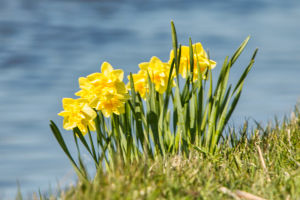In urban life, potted plants are vital elements for many in home décor and mood enhancement.
However, the proper sunlight exposure for these houseplants often falls victim to several misconceptions.
In this article, we’ll delve into four prevalent misunderstandings surrounding sun exposure for potted plants, aiming to empower you with better care practices for your green companions.
Misconception 1: Assuming all plants thrive in full sunlight
While sunlight is indispensable for plant growth, not all species thrive under direct sunlight. Some varieties, such as cacti and spider plants, prefer partial shade. Excessive exposure to intense sunlight can lead to sunburn and eventual leaf demise.
Therefore, when situating your plants, it's crucial to tailor their placement according to their species and light requirements, rather than employing a one-size-fits-all approach.
Misconception 2: Believing stronger sunlight equates to better growth
There’s a common misconception that subjecting houseplants to prolonged periods of intense sunlight fosters robust growth. However, this belief isn’t entirely accurate. While certain plants necessitate adequate sunlight for photosynthesis, excessive exposure can be detrimental.
Particularly during sweltering summer temperatures, intense sunlight accelerates soil moisture evaporation, rendering plants susceptible to dehydration. Hence, it's imperative to regulate sunlight intensity and duration based on the specific needs of each plant to prevent overexposure.
Misconception 3: Assuming plants don’t require sunlight during winter
Despite the diminished sunlight during winter, potted plants still require light for photosynthesis and sustenance. Some individuals mistakenly assume that the winter sun isn’t potent enough to warrant sunlight exposure for their plants.
This notion is erroneous. Although sunlight intensity may dwindle in winter, positioning your plants in well-lit areas or supplementing with artificial lighting facilitates healthy growth even during the colder months.
Misconception 4: Believing all plants flourish indoors
Many enthusiasts opt to cultivate indoor gardens for aesthetic appeal and air purification. However, not all plants thrive indoors. Certain species, particularly tropical varieties, necessitate ample sunlight and air circulation to thrive.
Prolonged indoor confinement may trigger leaf yellowing, stunted growth, or plant demise. Therefore, when selecting plants for indoor cultivation, it’s imperative to choose varieties suited for indoor environments and ensure they receive adequate light exposure and ventilation.
Conclusion
Adequate lighting is paramount for the flourishing of houseplants. By dispelling the misconceptions above and tailoring sunlight exposure based on individual plant requirements, you can ensure robust growth and verdant foliage for your potted plants.
We hope this guide empowers you to provide optimal care for your green companions, enriching your living space with vitality and allure.


